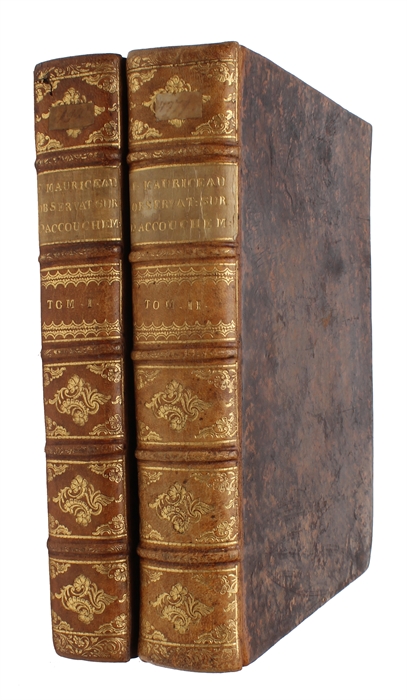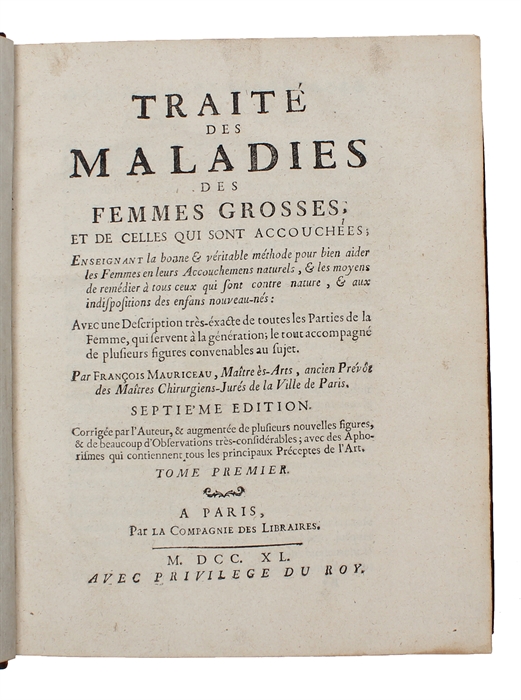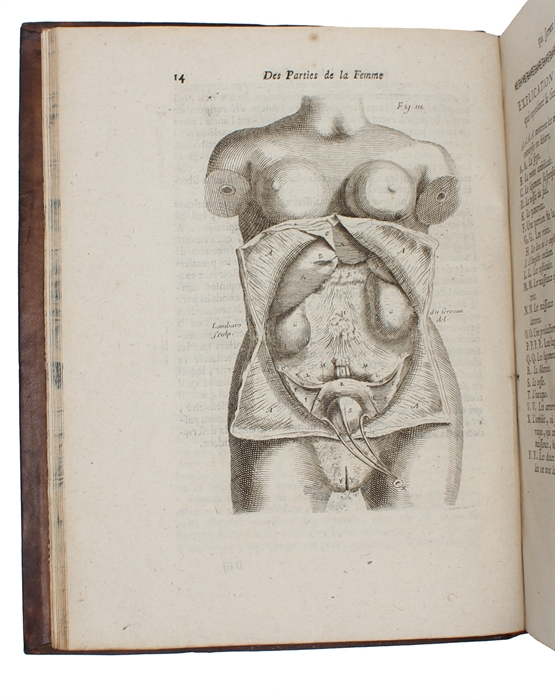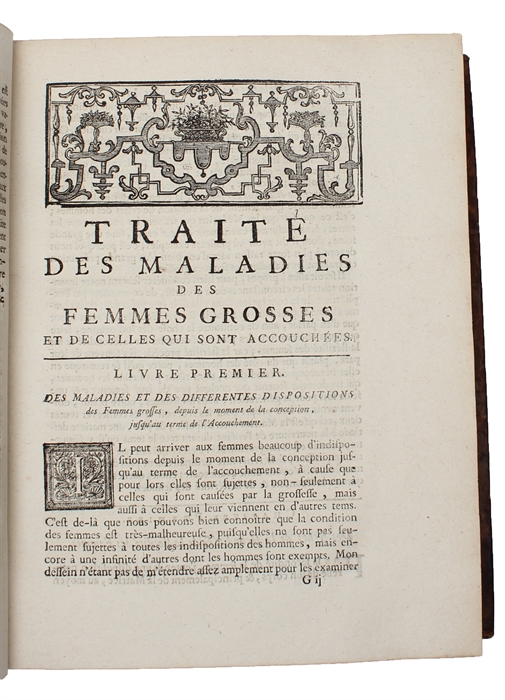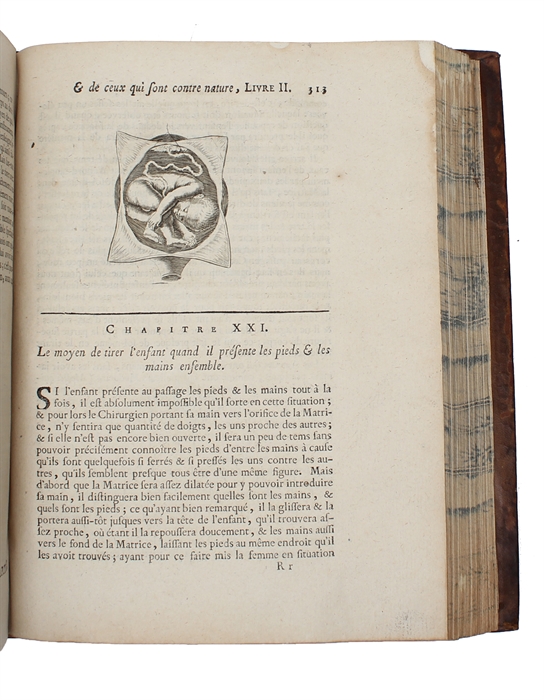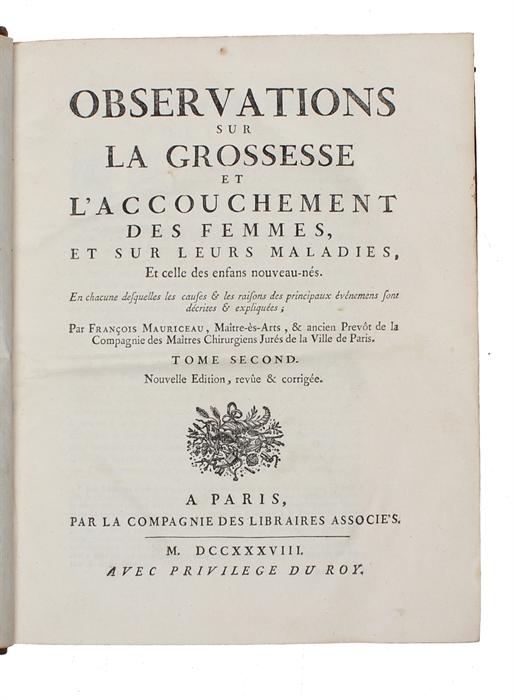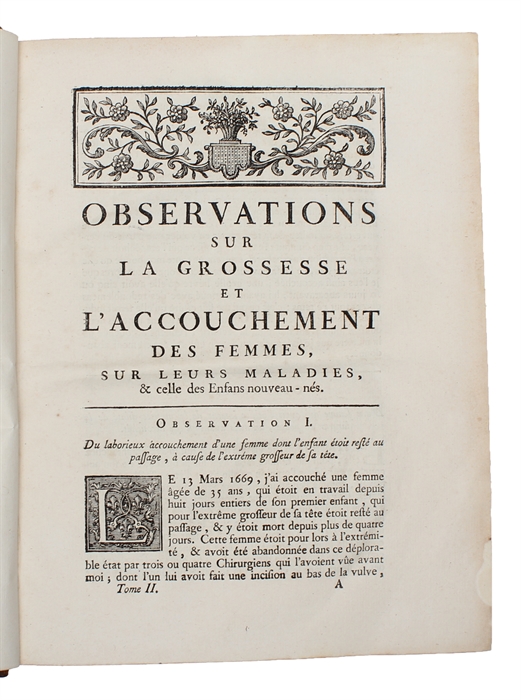“ESTABLISHED OBSTETRICS AS A SCIENCE"
MAURICEAU, FRANCOIS.
Traité des maladies des femmes grosses et de celles qui sont accouchées (...). Tome Premier (+) Observations sur la grossesse et l'accouchement des femmes et sur leurs maladies et celles des enfans nouveau-nés en chacune desquelles les causes et les raisons des principaux évenemens sont décrites et expliquées. Tome Second.
Paris, La Compagnie des libraires 1738 [vol. 2] & 1740 [vol. 1].
4to. Uniformly bound in two contemporary full sprinkled calf bindings with five raised bands and gilt lettering and ornamentation to spines. Small paper-labels pasted on to top of spines. Light wear and sunning to extremities. Internally nice and clean. (12), 555, (25) pp.; (8), 671 pp. With numerous engravings in text.
Final and most expanded edition of THE famous work which “established obstetrics as a science” (Garrison & Morton). Here, Mauriceau discusses various aspects related to pregnancy, labor, and the management of complications that may arise during gestation and delivery and introduced for the first time the practice of delivering his patients in bed instead of in the obstetrical chair. “The outstanding textbook of the time. Mauriceau, leading obstetrician of his day, introduced the practice of delivering his patients in bed instead of in the obstetrical chair. It was to Mauriceau that Hugh Chamberlen attempted to sell the secret of his forceps; Chamberlen translated the Traité into English in 1672. This book established obstetrics as a science.” (Garrison-Morton) François Mauriceau (1637 - 1709) was a French obstetrician “had an extensive practice in midwifery in Paris, both private and in the Hotel Dieu, which was at that time the leading establishment for lying in women in Europe. In 1668, when only 31, he published his great work Traite' des Maladies des Femmes Grosses et Accouchies,' which according to Andre Levret 'drew from the cradle' the art of midwifery. Two years later Mauriceau received a visit from Hugh Chamberlen, a member of the British family that possessed the secret of the obstetric forceps, who then translated his text making it available to the English speaking world. The influence of this work on many aspects of midwifery was immense, and Mauriceau is still remembered eponymously for his description of delivery of the after coming head in breech presentation. Mauriceau's book also contains a section entitled 'Of children newborn and their ordinary Distempers, together with necessary directions to chuse a Nurse'. Among the 18 chapters are ones on 'Of cutting the Tongue when Tongue-ty'd' and 'How to cure the Venereal Lues in Infants'. Perhaps, though, in retrospect his greatest impact was in the influence his advice had on the position that women should adopt during delivery. From earliest times women throughout the world had usually assumed an upright posture during parturition. In Europe the birthing chair was particularly popular.4 As Atwood has written5: 'The first major obstetrical change in the position of the parturient occurred when Francois Mauriceau substituted the bed for the birth stool. The time honoured 'position' assumed in an obstetric chair was replaced with the recumbent position to facilitate examinations and obstetric operations for the obstetrician'.” (Dunn, Francois Mauriceau (1637-1709) and maternal posture for parturition) (Garrison-Morton 6147, the 1668-edition)
Order-nr.: 61013

